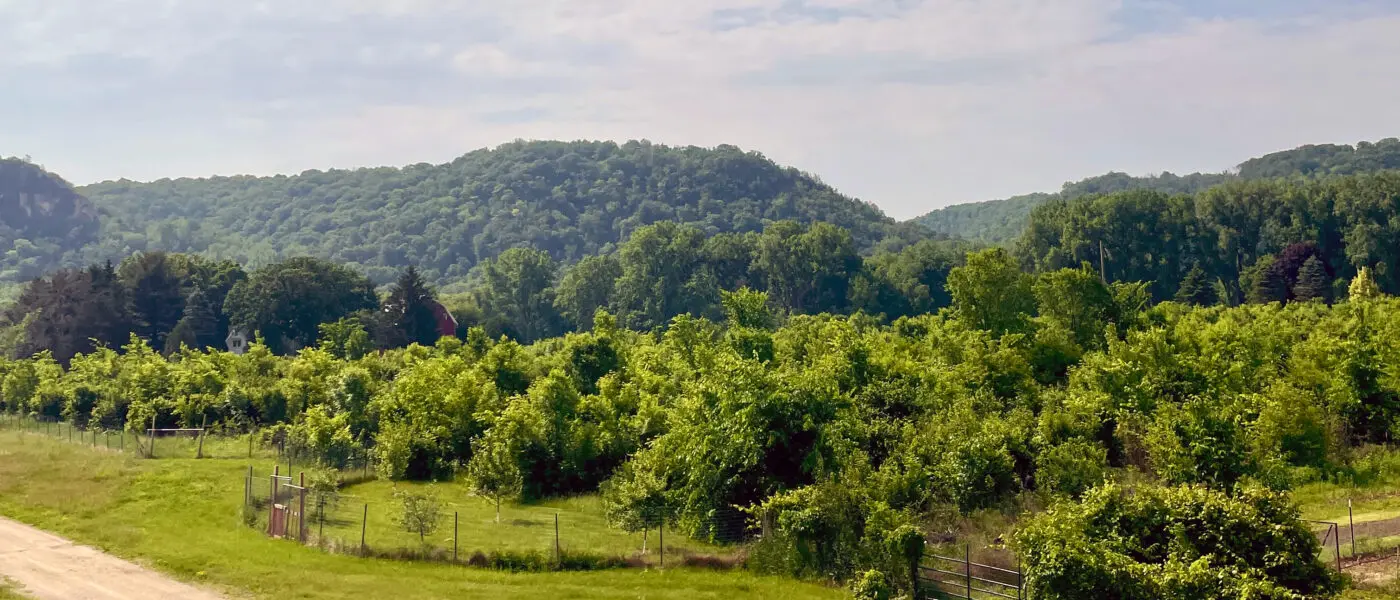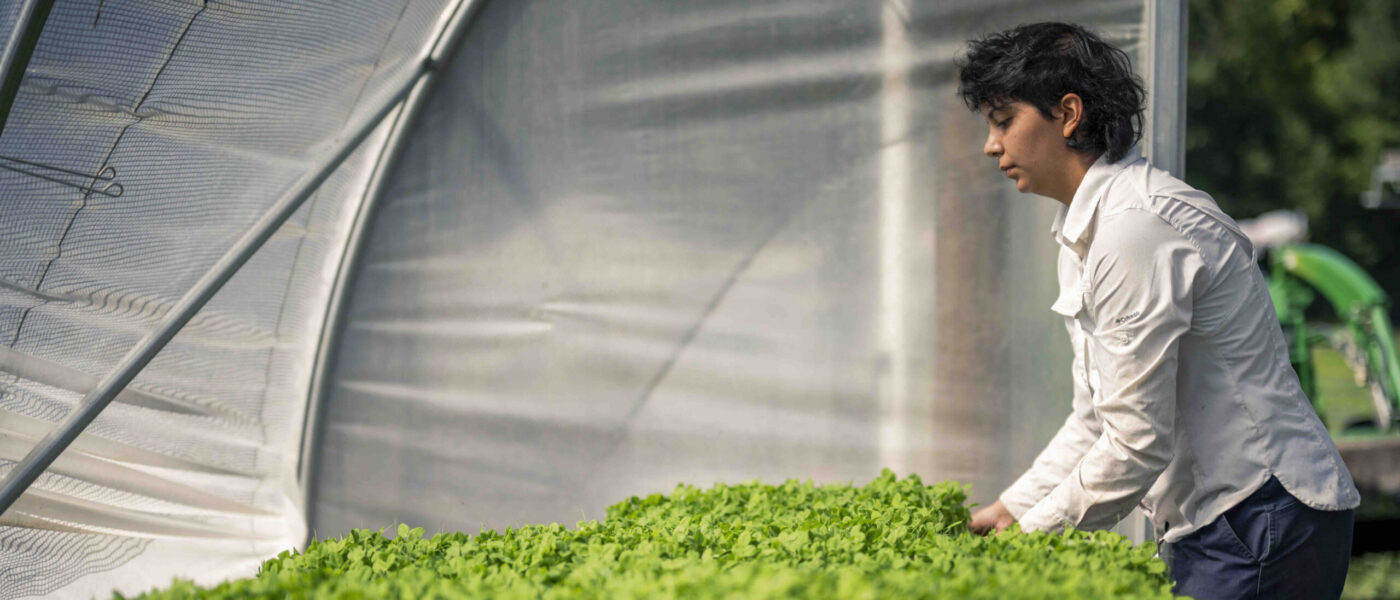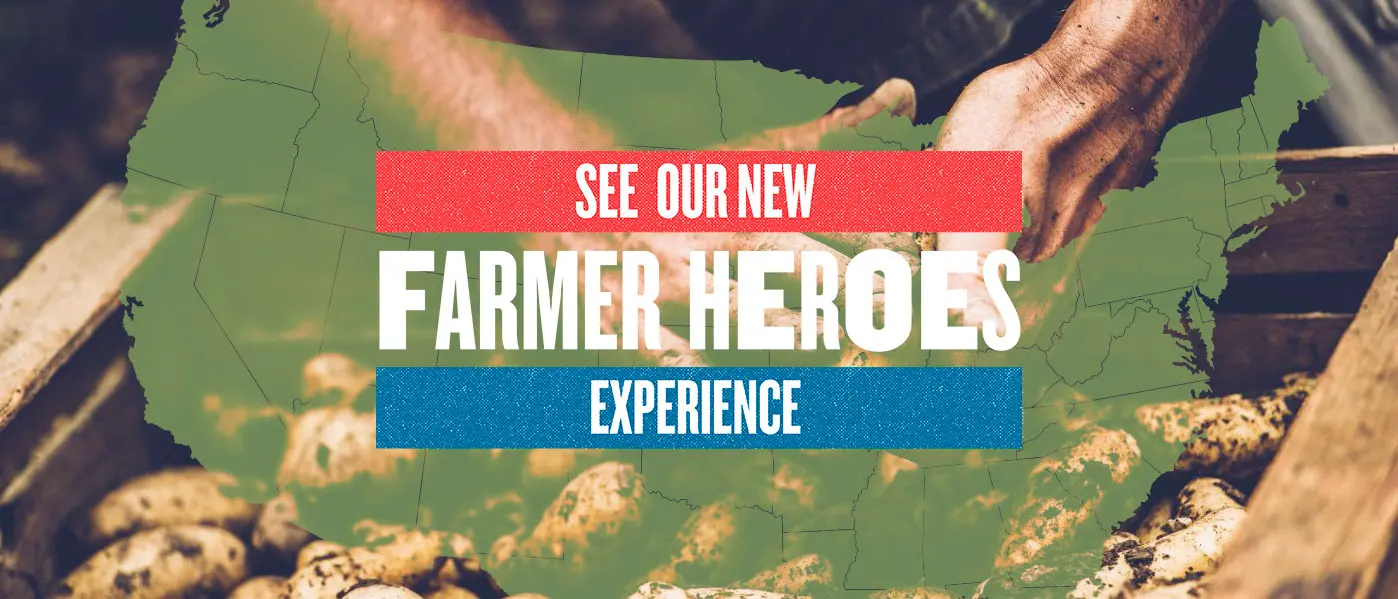Paul Mairet and his partner Sanna Mairet run Nine Hazels Farm, a small hybrid hazelnut farm located just outside Lake City, Minnesota. Their 30-acre farm sits between two bluffs, a mile from the Mississippi River, with hedgerows of about 4,000 hazel plants, woodlands, a creek and space for experiments with other perennial crops.
Paul grew up in the woods and Sanna grew up gardening with her mother. When they had the chance to take over an established hazelnut farm more than five years ago, it felt both like an adventure and a homecoming. Though they had no previous farm-scale experience, mentorship from the original owners gave them the foundation they needed. Over time, the more they learned, the more inspired they became.
Paul and Sanna named their farm Nine Hazels after a Celtic legend. In the myth, nine hazel trees grow around a sacred well of wisdom. Hazelnuts fall into the well, imbuing it with power and inspiration. The image of hazels as symbols of nourishment, wisdom and creativity continues to shape their vision for the land.
“We want that growth to be as sustainable and benefiting as many creatures as possible.”
The farm operates with a philosophy Paul calls productive conservation. That means prioritizing the health of the ecosystem while also creating space to grow food and support human communities. “We prioritize the health of the ecosystem in our work and decision making while still tending spaces that benefit humans along with wildlife,” Paul says. They avoid pesticides and herbicides and they’re working toward a model that requires no added fertilizer. They promote native shrubs and trees to grow alongside the hazels to support biodiversity. Wildlife, including birds and mammals, play a vital role in maintaining soil health and nutrient cycles.
Each season brings its own challenges and routines. In spring, Paul prepares bare root seedlings and plants new trees. In summer, he cares for hazel tree starts, maintains their personal vegetable garden, and cuts back invasive plants without using chemicals. Fall is harvest time. Hazelnuts are picked by hand through the entire month of September. After drying, the crop is processed in late fall and winter. Winter is also the time for coppicing older hazels, a process that rejuvenates nut production by cutting them to the ground and allowing them to regrow. Paul uses these cuttings to create woven crafts such as baskets, fence panels and wreaths and he teaches community classes on working with hazel stems.
Most of the time, Paul works alone on the farm as Sanna works full time off farm, which helps cover the costs of conservation work that does not always pay for itself. Friends and family show up during the busy harvest season, turning the hard work of gathering nuts into a shared experience.
They sell their products through a local farmers market and online, and they also offer products through local shops. Their offerings include fresh roasted hazelnuts, hazelnut oil used for natural skincare, nursery seedlings and handmade crafts.
Looking ahead, Paul and Sanna hope to continue diversifying their perennial plantings and improve their hazelnut crops. They want to expand their work in education and craft and explore new ways to bring people onto the land. A recent milestone was the installation of solar panels that are expected to generate more than enough electricity for the farm. For Paul, growth is only meaningful if it supports both human and ecological well-being. He says, “We want that growth to be as sustainable and benefiting as many creatures as possible.”
He believes the term family farmer should shift to community farmer, a term that he believes better reflects the relationships between farms and the people who support them. He sees agriculture dominated by systems that reward scale and speed at the cost of sustainability. In contrast, small farms trying to restore land and grow food responsibly often face high costs and economic pressure to cut corners. “Our economic systems incentivize large industrial scale operations that are unrealistic and unhealthy for families to strive for,” he explains.
Climate change is one of the biggest challenges the farm faces. It is also what motivates Paul to keep going. “Do what you can with what you’ve got” is a reminder he returns to often. Hazels offer him a hopeful path forward. “They require very little and give so much. This is true of other perennial crops too. Establishing trees and shrubs is one of the best things you can do to mitigate climate change.”
Healthy food, Paul believes, should be available to everyone. That is what food justice means to him. But it cannot happen without addressing broader systems including wages, working hours, food policy and access. He says, “Food justice involves working to achieve that necessity for people who have been oppressed to the point of not having access to healthy food.”
Paul and Sanna acknowledge that they were able to purchase their farm through family support and savings. They recognize the privileges of being white landowners in a country where wealth and land were stolen from Black and Indigenous people. “Even for us, it was not easy to acquire land,” Paul says. “Before colonization and violent displacement, the land of our farm was inhabited by the Wahpeton people of the Dakota Nation.” They have begun building relationships with the nearby Prairie Island Indian Community and are finding ways to share resources and time.
Paul says that farming has given him a sense of purpose. He loves the physical work, the creativity, and the connection to the land and all the life it supports. Most of all, he is inspired by the idea that a small farm can be part of a much bigger solution.








